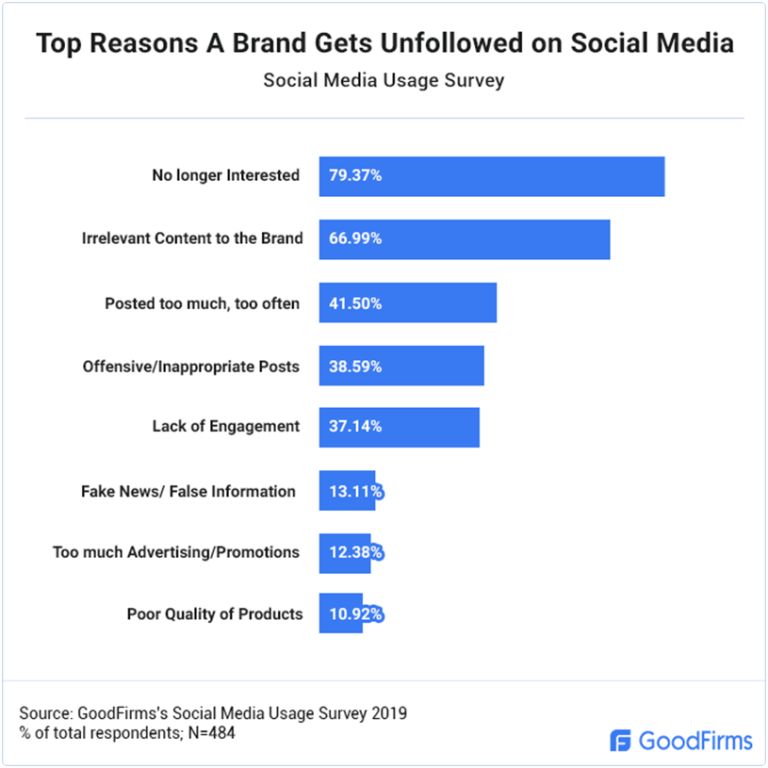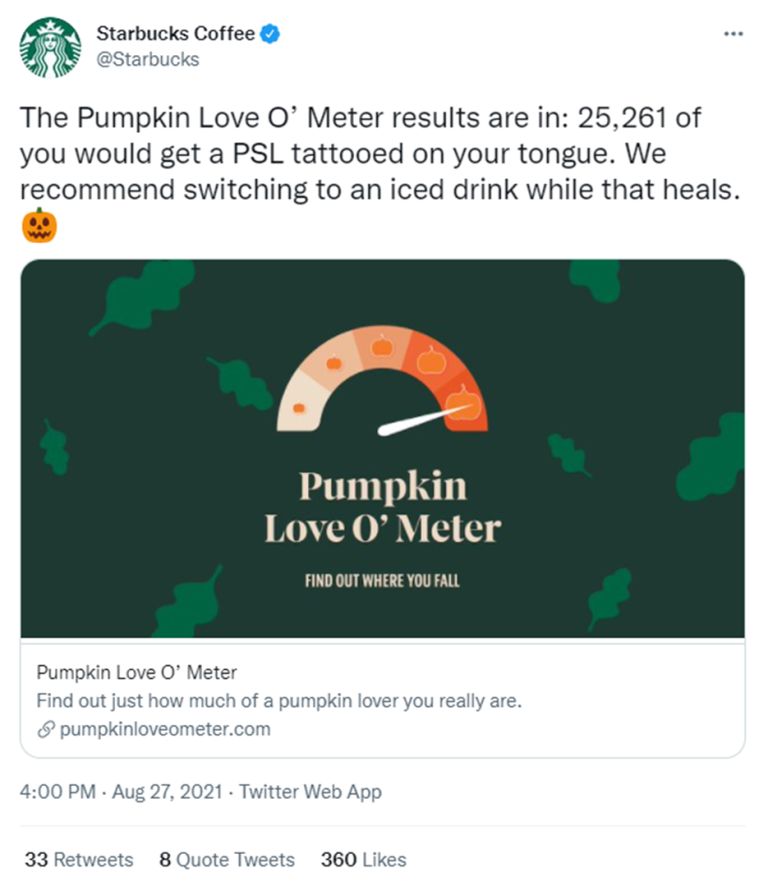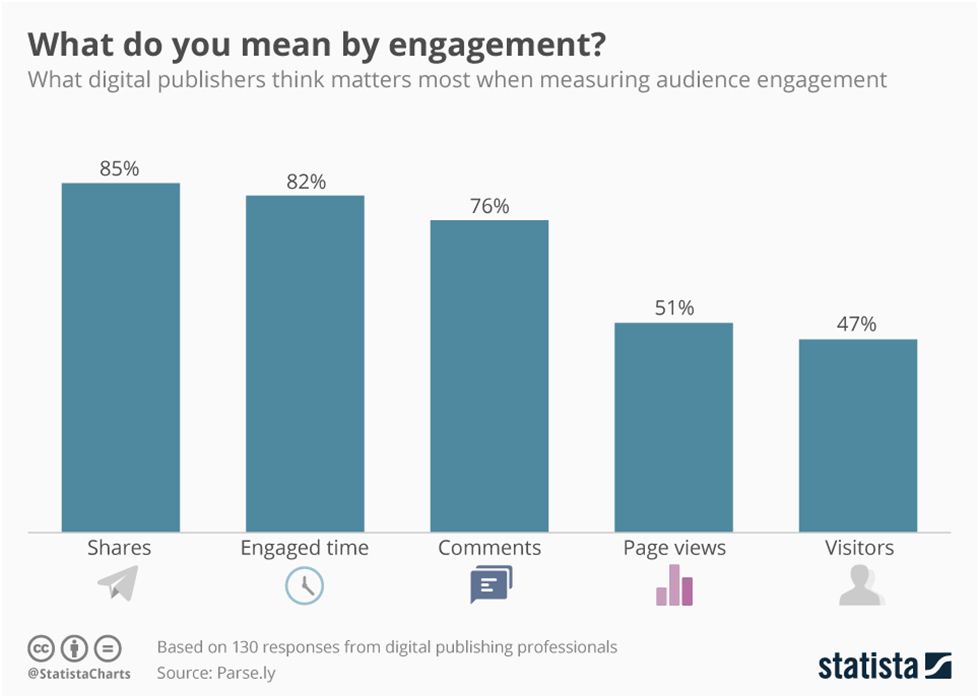No matter how crowded a marketplace becomes, businesses invest significant amounts of effort into their marketing strategies in a bid to get their brand and products under the noses of as many consumers as possible. This, coupled with the introduction of technology today, has led to social media becoming one of the biggest platforms for businesses to leverage.
Many brands use social media to help them stand out from their competitors. Creating unique and interesting content while attempting to make it go viral. In the process of doing so, it’s normal to make mistakes, but social media users can be unforgiving. Mistakes can pay a hefty price and cost brands their reach and engagement as well as their follower/customer numbers.

(Image Source: Good Firms)
The complex world of social media, and the boundless creativity of content creators, can make it difficult to identify content that is real and that which has been purposefully created with the intention of going viral.
As a new or existing brand, there are many guides out there which provide information of how many times to post on your platform and the type of content to create – but finding out what works for you and your brand is very much a process of trial and error.
Table of Contents
Social media marketing mistakes to avoid
With this in mind, it’s important for businesses to avoid falling into the trap of one of the many social media mistakes that are floating around cyberspace. Let’s take a look at some of the most recurring pitfalls to keep away from:
Never focus on quantity over quality
Over-posting can be damaging to a brand, however the most damaging to the reputation of a brand is the quality of content that is being posted. Content can come in a variety of forms which not only include social media posts and video but also blogs and podcasts.
Posting less on social media sites, rather than, say, tweeting 20 times per day, can actually have a positive effect on brands and increase consumer engagement and reach. Posts that are of high quality and not just posts to meet the daily quota have been found to perform better and resonate with followers. The algorithms of the platforms also work on bringing them up on user feeds – creating a higher number of clicks and engagement.
Reducing the number of times a brand posts in a day also opens up time to produce and create quality denoted to be shared. Many small businesses do not have the time to create that much content to be posted everyday.
In today’s fast-paced world, high quality posts should be considered a priority for any business that looks to demonstrate value to its audience. Consumers are continually provided with amazing graphics and photographs of products and services which has increased their exceptions. For this reason, concentrating on quality will help a brand get noticed.

In the case of the official Starbucks’ Twitter account, rather than launching high-volumes of posts regarding the return of the company’s pumpkin spiced lattes, the company opted to create a tweet that offered far greater engagement – by enabling users to test their love for the product – and then engaging directly with customers posting their results after.
Avoid being on all social media platforms
Brands usually spread themselves too thin and believe they need and have to be on all social media platforms – but this isn’t necessarily true. Although social media platforms have some of the same characteristics, each platform works in a different way and appeals primarily to wildly different demographics.
For instance, Instagram has been popular for photo sharing and, over time, has added video and story capabilities, like Snapchat. This introduction of features has made brands concentrate less on other social media platforms like Snapchat as they understood Snapchat is not part of their users’ audience and they were receiving better interaction on Instagram. However, Snapchat has seen growth over the years.

(Image: The Social Media Report)
The data above is just a snapshot of just how diverse different social media audiences can be. If you’re a brand that’s intending to market your wares to younger consumers, you may find that you’re best positioned to run campaigns on Snapchat, which is comprised largely of users aged 18-29, but may find that you’re preaching to an empty room on Nextdoor – which is only used by 5% of 18-29 year olds, for instance.
Fortunately, analytical platforms like Google Analytics and Finteza can help you to formulate your marketing strategies through actionable insights where your visitors are arriving from in terms of specific social network links. If you’re noticing that you’ve attracted twice as much traffic via Instagram campaigns compared to Snapchat, for instance, it may be time to alter the time you commit to each platform.
Sharing only your own content
Many brands shy away from using curated content which is created by other brands purely because of the fear of it not contributing to their own bottom-line – which includes their own traffic, revenue, and sign ups. However, brands that think in this way are short-sighting the possibilities of what they can achieve with it.
Continuously marketing own brand content can get boring for consumers and in some cases it can put followers off the brand. Sharing content created by other brands can help mix up content and diversify it further. Curating content from other brands also helps to bring in new followers and customers and works particularly well on platforms like Facebook.
Posting quality relatable content from other brands has proven to increase brand awareness, following, and the mention of the other brands reels in their followers too. They are able to reach people that the brand has no association with whilst converting some of them into followers. It may seem like a strange thing to do but the results can help to boost engagement and open the door to a broader audience.
Uploading videos
Video content has become a big part of modern social media marketing. Not only do they have to be of sufficient quality, but the better the information or entertainment received from the video, the more it is likely to do better. However, when we think of video content, our minds automatically cast straight to YouTube, and rightly so, after all it is the most popular video sharing platform out there today.
However, analysis by Qunitly, which analysed over six million Facebook posts, found that the videos uploaded directly onto Facebook receive more engagement and shares than videos that have been uploaded on YouTube and then put onto Facebook. This insight suggests that native videos uploaded to the social media platform itself have better engagement with audiences.

(Image Source: Statista)
Interactive rates for Facebook native videos were 109.67% higher than YouTube videos and had a 477.76% higher share rate than YouTube videos. Therefore, only uploading brand videos on Youtube and then sharing the link on Facebook can be more damaging for the brands than uploading it straight to Facebook itself. With this in mind, it’s worth considering doing the same for all other social media sites rather than having links from other platforms.
Failing to target a specific audience
Setting a preferred audience can help make content more relevant. Using tools offered by the social media platforms can help brands better target their audiences and Facebook localised posts can do exactly that. By localising posts to areas, brands are able to target specific audiences according to the content and the geographical area, making it more tailored to them.
Although a localised post will reach fewer people than a traditional facebook post, the streamline of the localisation will make it only appear on the feed of consumers who are relevant and who the content will resonate with more. Facebook algorithms cleverly assigns a personalised relevance score to every post. This allows the user’s feed to be systematically organised to only see posts most relevant to them.
By using this method of limiting posts to only relevant audiences, Facebook and other social media platforms that use this have a better chance of showing posts from brands that would usually get lost in the noise of other posts that are having more interaction. This approach is great for local businesses whose target audience are local residents.
There is still lots to learn in the way of social media marketing and as platforms continue to change to adapt to the growth they are eperice, it is likely marketing on them will change to, looking completely different to the social media marketing we are used to today.
